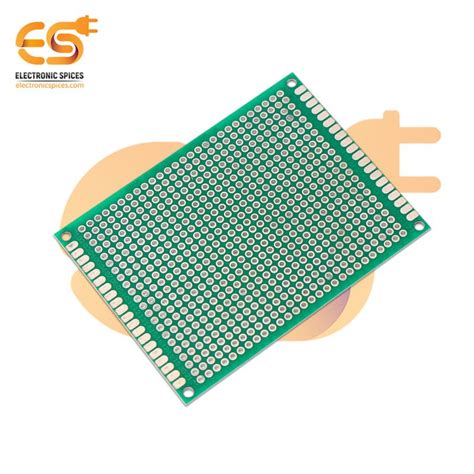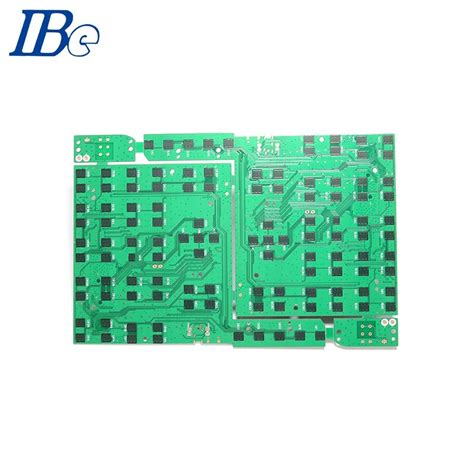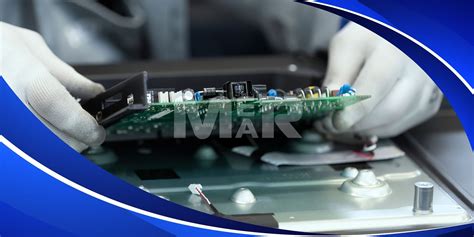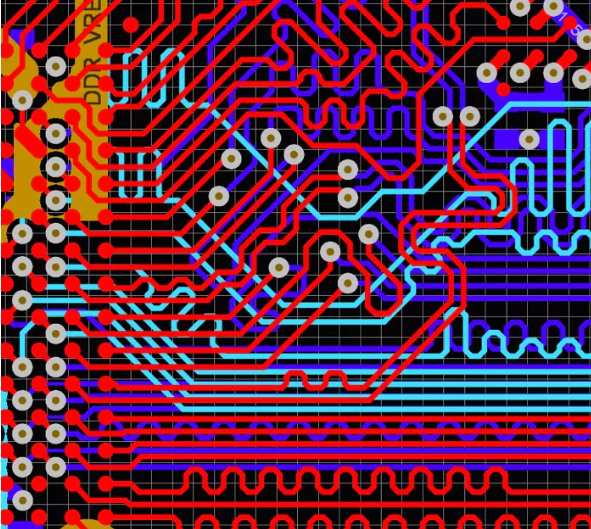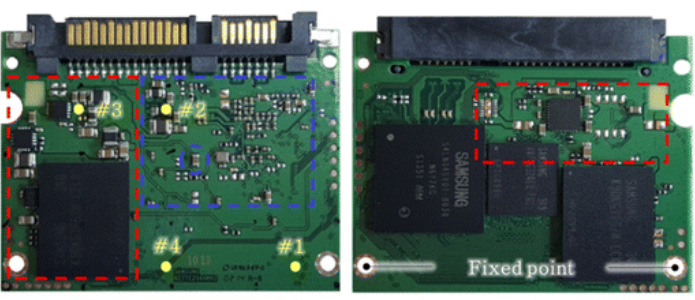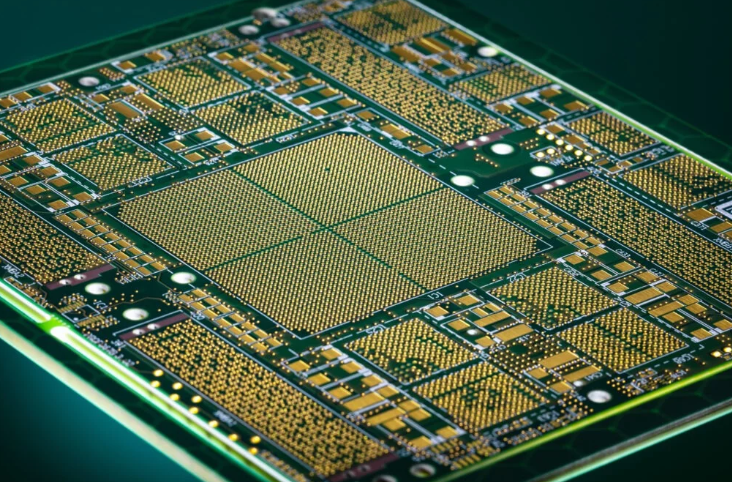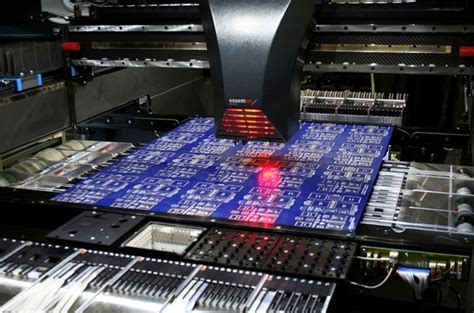Unlocking Quality: The Leading Copper Clad Board Manufacturers
Key Takeaways
Understanding the importance of selecting the right copper clad board manufacturer is crucial in achieving high-quality results in pcb assembly and pcba processes. The landscape of the industry features a variety of manufacturers, each with unique strengths and production methodologies that cater to diverse applications. A reputable manufacturer not only ensures the use of high-quality raw materials but also employs advanced technologies in their production processes, thus meeting stringent industry standards. Prioritizing manufacturers known for their commitment to innovation can significantly enhance the overall quality and reliability of pcb assemblies. Consequently, industry advancements often hinge on these leading players who strive to enhance performance while reducing costs, allowing for improved efficiency in both design and manufacturing phases. Ultimately, knowing what sets these manufacturers apart can empower businesses to make informed choices that align with their specific needs and quality expectations.
Introduction to Copper Clad Boards: Importance and Applications
Copper clad boards, often referred to as CCBs, play a pivotal role in the realm of electronics, serving as the backbone for various applications. This material, primarily constructed from a thin layer of copper bonded to a non-conductive substrate, is essential in the pcb assembly process. These boards facilitate the routing of electrical signals, making them indispensable in pcba (printed circuit board assembly). Their versatility is seen across multiple industries, from telecommunications to automotive sectors.
The significance of copper clad boards lies not only in their structural integrity but also in their capacity for innovation. The efficiency of ccbs can profoundly influence the overall performance and durability of electronic devices. The next generation of electronics demands higher precision and reduced sizes; thus, choosing manufacturers who prioritize quality and technological advancement is crucial.
“Selecting a manufacturer that focuses on both quality materials and cutting-edge techniques will lay the foundation for superior performance in your electronic applications.”
As technology evolves, so too does the requirement for advancements in copper clad board applications, solidifying their importance in future innovations within diverse electronics landscapes.
Criteria for Selecting a Quality Copper Clad Board Manufacturer
Selecting a quality copper clad board manufacturer is crucial for ensuring that your pcb assembly or pcba projects meet the highest standards of reliability and performance. Several key criteria can guide this selection process. First and foremost, manufacturers should possess a robust reputation within the industry, as evidenced by customer reviews and case studies showcasing their track record. Additionally, evaluating their certifications—such as ISO or IPC standards—can provide insight into their commitment to quality control and safety practices.
Another important factor is the diversity of materials offered by the manufacturer. A leading provider should be capable of producing various types of copper clad boards, addressing specific needs such as high-frequency applications or enhanced thermal conductivity. Furthermore, the production capabilities in terms of scale and technology are vital; state-of-the-art machinery can significantly affect the quality and consistency of the final product.
Table 1 below outlines essential criteria for choosing a copper clad board manufacturer:
| Criteria | Importance |
|---|---|
| Reputation | Indicates reliability |
| Certifications | Ensures adherence to industry standards |
| Material Variety | Addresses diverse application needs |
| Production Technology | Impacts quality consistency |
| Customer Support | Enhances overall partnership experience |
Finally, consider evaluating their customer service and support systems. An effective manufacturer should provide assistance throughout the lifecycle of your pcb assembly, ensuring smooth communication, timely delivery, and responsiveness to any concerns that may arise post-production. By focusing on these criteria, businesses can make informed choices in selecting a partner that aligns with their goals for innovation and excellence in manufacturing.
Spotlight on Leading Manufacturers: A Review of Industry Giants
In the realm of copper clad boards, several giants stand out due to their unwavering commitment to quality and innovation. Manufacturers such as Mitsui Mining & Smelting Co., Ltd. and Rogers Corporation have established themselves as leaders by consistently producing high-performance products that meet the demanding needs of the pcb assembly sector. These companies employ cutting-edge technology and streamlined production processes, enabling them to deliver boards that exhibit superior electrical conductivity, thermal stability, and resistance to environmental stressors. As the demand for advanced pcba solutions continues to rise, these industry leaders are not only adapting their practices but are also pioneering new methods that reshape the landscape of manufacturing. Their focus on research and development ensures that they remain at the forefront of industry advancements, setting benchmarks for performance and reliability. In essence, their influence drives both innovation and quality in copper clad board production, benefiting a wide array of applications from consumer electronics to aerospace technologies.
Innovative Production Processes in Copper Clad Board Manufacturing
In the realm of copper clad board manufacturing, innovation is the cornerstone of progress. Leading manufacturers have adopted cutting-edge production techniques that enhance the quality and efficiency of their pcb assembly processes. One such innovation involves the use of advanced lamination techniques that ensure a superior bond between the copper layer and the substrate, promoting durability and performance. Additionally, manufacturers are increasingly integrating automation into their production lines, significantly reducing human error while accelerating production speeds. This not only increases output but also permits greater consistency in product quality across pcba units.
Moreover, the introduction of environmentally friendly materials and recycling practices highlights a commitment to sustainability without compromising on performance. By utilizing smart manufacturing systems that incorporate real-time data analytics, companies can monitor every step of the process to optimize efficiency further. This proactive approach not only drives cost savings but also enhances product reliability — critical aspects when it comes to high-performance applications in sectors such as telecommunications and aerospace. As a result, these innovative production processes are setting new benchmarks for quality within the industry, ensuring that manufacturers remain competitive as they navigate future technological advancements in copper clad board production.
Key Features that Define Top-Quality Copper Clad Boards
When evaluating copper clad boards, several key features emerge that distinguish high-quality products from the rest. First and foremost is the material composition; the best boards typically utilize premium-grade laminates that ensure durability and conductivity. This is particularly important in applications involving pcb assembly and pcba, where performance is critical.
Another significant characteristic is the layer adhesion strength; superior manufacturers often employ advanced bonding techniques that enhance resistance to delamination under thermal and mechanical stress. This attribute directly impacts the reliability of electronic devices. Additionally, thickness variations should be minimal, as uniformity contributes to more predictable electrical performance, especially in densely packed circuitry.
Furthermore, state-of-the-art surface finishes are crucial in preventing oxidation and ensuring good solderability—essential for seamless integration in pcba processes. Manufacturers also focus on reducing surface roughness, which allows for better signal integrity and minimizes losses during operation.
Lastly, also noteworthy is the level of customization available from leading manufacturers. The ability to specify unique dimensions, properties, or additional layers can significantly enhance the functionality of copper clad boards for specialized applications.
In summary, top-quality copper clad boards are characterized by their superior material composition, adhesion strength, uniform thickness, advanced surface finishes, and customization options—all contributing to enhanced performance and reliability in various electronic applications.
The Role of Technology in Advancing Copper Clad Board Production
The advancements in technology have significantly transformed the landscape of copper clad board production, enhancing efficiency and ensuring the highest standards of quality. Modern manufacturers increasingly rely on automated processes and sophisticated machinery to improve precision in the crafting of pcb assembly components. Innovations such as laser etching and advanced imaging have facilitated intricate designs that were once deemed impractical. Furthermore, technologies like artificial intelligence and machine learning play a crucial role in monitoring production parameters in real time, minimizing defects, and optimizing material usage. These developments not only lead to better pcba outcomes but also ensure that manufacturers can meet the growing demands of various industries, from consumer electronics to automotive sectors. As we continue to explore these cutting-edge technologies, it becomes clear that they are integral to shaping a future where copper clad boards are not only more efficient but also more reliable than ever before. The ongoing evolution in technology not only supports current production needs but also sets the stage for future innovations that promise even greater advancements within the industry.
Future Trends in the Copper Clad Board Industry
As the copper clad board industry evolves, several emerging trends are set to reshape the landscape of pcb assembly and enhance the efficiency of pcba processes. One significant trend is the increasing demand for lightweight and compact designs in electronic devices. This necessitates manufacturers to innovate their materials and production techniques, leading to smart materials that offer superior thermal and electrical properties while minimizing weight. Additionally, the push for sustainability is prompting manufacturers to adopt more eco-friendly practices, including the use of recyclable materials in their copper clad boards. Enhanced automation in manufacturing is also anticipated to streamline production processes, ensuring higher precision and reducing lead times for pcb assembly. Furthermore, as technologies like Internet of Things (IoT) expand, there will be a growing need for specialized boards optimized for connectivity and performance. This indicates that leading manufacturers must stay ahead by continuously improving their processes and embracing new technologies. By focusing on these trends, industry players will not only meet current demands but also anticipate future needs in this rapidly advancing sector.
Conclusion: Elevating Standards and Expectations in Manufacturing
In the evolving landscape of electronics, the significance of copper clad boards cannot be overstated. These components serve as the backbone for pcb assembly and pcba, providing vital functionality and reliability in various applications. Leading manufacturers are setting higher benchmarks by focusing on quality, innovating production processes, and integrating advanced technology. Their commitment to excellence ensures that their copper clad boards meet stringent industry standards while accommodating modern demands. As these companies pave the way for future advancements, they not only influence current production techniques but also enhance the overall reliability of electronic products. The rising expectations in manufacturing are a testament to their efforts, pushing all players in the industry to elevate their offerings to maintain competitiveness. By staying attuned to technological trends and customer needs, these manufacturers are redefining what it means to produce high-quality pcb assembly components that stand the test of time.
Conclusion: Elevating Standards and Expectations in Manufacturing
As we conclude our exploration of the leading copper clad board manufacturers, it is clear that the industry is poised for significant advancements. Companies dedicated to producing high-quality pcb assembly materials are consistently refining their methods to meet increasing demands for durability and efficiency. The emphasis on innovative production processes has resulted in boards that not only excel in performance but also support a diverse range of applications, from automotive to consumer electronics.
The discussion around quality standards illustrates the importance of choosing manufacturers who prioritize advanced technology and sustainable practices. Such approaches ensure that pcba components meet the rigorous requirements of today’s electronic assemblies. As these industry giants continue to evolve, they are setting new benchmarks for reliability and innovation, fostering a competitive landscape where customer satisfaction is paramount.
In summary, the future looks promising for the copper clad board sector, with a strong focus on quality improvement and adoption of cutting-edge technology. This commitment not only enhances product offerings but also prepares manufacturers to tackle future challenges effectively. The path forward will be shaped by those who remain dedicated to setting high standards while embracing growth through innovation in every aspect of pcb assembly processes.
FAQs
What is a copper clad board?
A copper clad board is a substrate that consists of a thin layer of copper bonded to an insulating material, typically used in printed circuit boards (PCB) production. Its primary role is to provide the necessary conductive pathways for electrical components during the PCB assembly process.
Why are copper clad boards important in PCB manufacturing?
Copper clad boards are essential because they ensure efficient electrical conductivity and thermal management. The quality of these boards directly affects the performance of pcba, impacting everything from signal integrity to durability.
How do I choose a quality copper clad board manufacturer?
When selecting a manufacturer, consider their technological advancements, production processes, customer reviews, and quality certifications. A reliable manufacturer will utilize advanced techniques to create high-quality copper clad boards, ensuring they meet industry standards and your specific needs.
What are the key features of top-quality copper clad boards?
Top-quality copper clad boards exhibit characteristics such as consistent thickness of copper layers, excellent dielectric strength, high thermal conductivity, and resistance to warping or deformation. These features are vital for reliable performance in pcb assembly applications.
How does technology impact copper clad board production?
Technology plays a significant role in optimizing production processes, enhancing precision in manufacturing and reducing defects. Advanced techniques can streamline operations and improve the properties of the final copper clad boards, ensuring they remain competitive in a rapidly evolving market.

